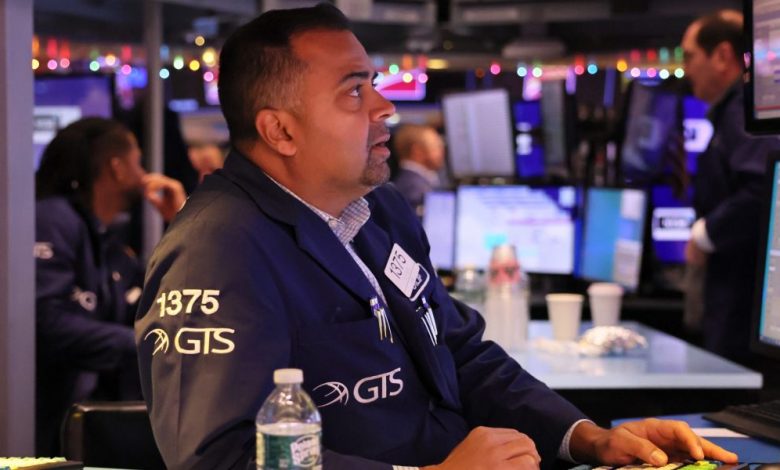2022 ended the era of cheap money. Here’s what the next decade has in store

For more than a decade after the Great Financial Crisis, central banks around the world kept interest rates low in an attempt to restart the economy.
It was an era of easy money that fueled risky investments in underperforming tech stocks, shady cryptocurrencies, and backdoor IPOs known as SPACs. And when COVID struck and central banks doubled down on easy monetary policies to avoid a global recession, it helped exacerbate a whole new problem: inflation.
Now central bank officials around the world are raising interest rates to counter sky-high consumer prices. Even the Bank of Japan — which pioneered easy monetary policy including near-zero interest rates — let its long-term interest rates rise this week. The abrupt change represents a new era for the global economy, markets and investors that will bring back classic business considerations such as profits and stability.
“I think you occasionally experience a turning point in the investment and economic era, and we’re in one now after more than a decade of near-zero interest rates,” said George Ball, chairman of Sanders Morris Harris, a Houston-based investment firm Wealth.
Ball said he believes US interest rates will average a much more “normal” 3% over the next decade, which should lead to a more conservative approach from investors.
If there’s a new catchphrase for this new reality, it’s “back to normal,” said Tim Pagliara, chief investment officer at investment advisory firm CapWealth Wealth.
“We will resolve much of the speculation,” he said. “There will be a lot of reassessments of everything from commercial real estate to how the investing public views things like crypto.”
Profits instead of promises. Investors, not speculators
Over the past decade, the promise of growth has been enough to propel many stocks higher. Earnings and a sustainable business model could come later. But with rising interest rates, according to the experts wealth spoke to agreed that a more selective and income-conscious investment approach will be a must over the next decade.
“You could just buy tech stocks and go on vacation,” said Jon Hirtle, executive chairman of Hirtle Callaghan & Co., an outsourced chief investment officer firm wealth. “And that’s unlikely to be what we’re going to have in the future.”
Rising interest rates increase the cost of borrowing for both businesses and consumers. This is slowing economic growth and hurting corporate profits, putting pressure on unprofitable and heavily indebted companies.
Ball argued that this means the valuations of these firms – the worst of which analysts dub “zombies” – will be much lower in the future than they are today.
And Pagliara explained that rising interest rates also mean savings accounts and other less risky investments will offer better returns than they have in the past decade. The lure of higher yields and the lack of risk will put some investors off stocks.
“What we’re doing is we’re discouraging speculators and encouraging savers,” Pagliara said. “Well, I think that’s really positive, even if the transition will be very bumpy.”
Higher interest rates revive old opportunities
Higher rates should also revive the appeal of fixed income investments and strengthen the classic 60/40 portfolio – a strategy in which 60% of a portfolio’s holdings are invested in equities and 40% in bonds.
Over the past decade, many investors have lived by the motto that “there is no alternative” to investing in stocks or TINA. With interest rates hovering near zero, the theory was that stocks were the only investment offering a meaningful return — but that’s no longer the case.
“It’s no longer TINA, there’s an alternative now,” Hirtle said. “Bonds give you real yield for the first time in 10 years.”
Rising bond yields mean that the classic 60/40 portfolio will make a comeback over the next decade.
“And that’s not surprising because it’s only been a few months since the death of the 60/40 [portfolio] it’s been widely reported,” Ball explained. “Generally, when you get that kind of headline, it’s untimely and ill-advised.”
As part of the return to the classic 60/40 portfolio over the coming decade, Pagliara recommended investing in short-dated and high-quality corporate bonds.
Exciting prospects and enormous challenges
While the next decade could mean a return to normalcy for central banks and investors, some forecasters warn that the global economy is facing severe headwinds that could lead to a nightmare scenario.
Nouriel Roubini, professor emeritus at New York University’s Stern School of Business and CEO of Roubini Macro Associates, argues that rising public and private debt could trigger a “stagflationary debt crisis.” And last month he even told it wealth that a series of simultaneous “megathreats” – including climate change and excessive government spending – could lead to “another variant of a global economic crisis”.
Hedge fund titan Stanley Druckenmiller also warned in September of a “high probability” that the US stock market could remain “flat” amid a global recession and deglobalization over the next 10 years.
Roubini and Druckenmiller argue that rising tensions between global superpowers will slow the trend of globalization that has allowed the free flow of cheap goods and services for decades. But Hirtle said he believes globalization is not over yet.
“It’s just kind of slowed down a bit. It’s still with us,” he explained.
Hirtle argues that warnings about deglobalization are the perfect example of forecasters like Roubini and Druckenmiller overly focusing on short-term “cycles.”
“The long-term trendline is still very, very positive,” he said, noting recent advances in cancer treatments and fusion power that could completely transform the world economy. “Really, it’s like never before that the world has been so positive about any kind of — you can look at any measure.”
And Hirtle isn’t the only one who is optimistic about the future for investors and the economy.
Ball said predictions of stagflation are a “copout” that ignores the fact that there is more data and innovation in the economy than ever before. The new era of markets represents a necessary if painful cleansing, but the global economy will do better on the other side, he argued.
“Periods of euphoria must be followed by periods of abstinence,” Ball said. “The increase in learning, knowledge and rate of improvement will be remarkable. And it will ultimately lead to higher rates – and longer periods – of economic growth than we’ve been used to over the past 100 years.”
Pagliara added that the next decade will be a “very exciting time for humanity” and for Americans in particular.
“If we implement it, if we respond properly and start acting nonpartisan, it’s actually an exciting time for the average American looking for advancement opportunities,” he said.



